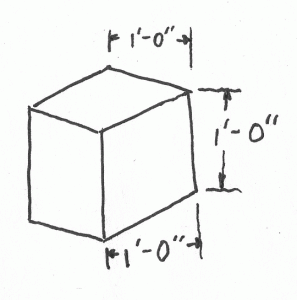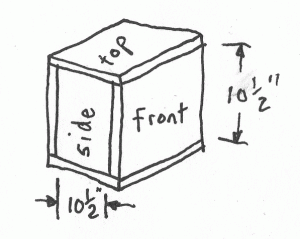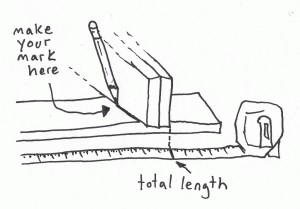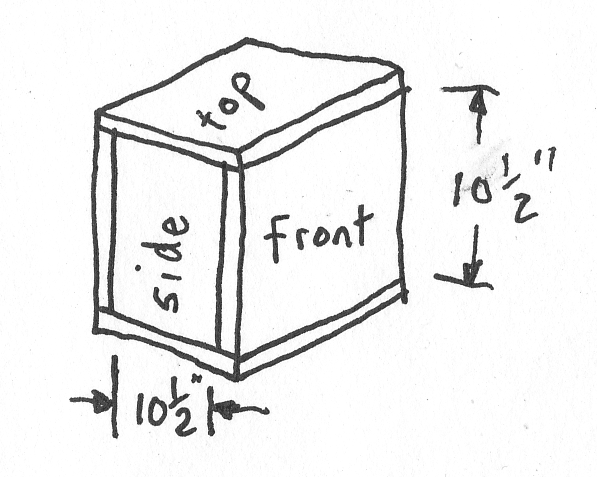One way to begin with a carpentry project is to make a cut list. You break apart the drawing into all the parts, figure out the measurements for each of those parts, and draw up a list of how big each piece should be. Perhaps the most common error in developing a cut list is neglecting the thickness of the pieces. Let’s say you want to build a cube which is one foot on each side. A perfect cube. A solid cube will be built with six pieces of wood. For this exercise, let us say you will build it with scraps of ¾†plywood you have laying around the shop. If you make a drawing of a cube, you may assume you need to cut six pieces one foot long and one foot wide.

Wrong!
Let’s look at the drawing again.
The top and the bottom can be one foot by one foot. However, if you make the front and the back one foot by one foot, the cube will end up being one foot by one foot, one and a half inches. See? You need to subtract the thickness of both the top and bottom from the length of the front and the back. In this case, ¾†and ¾†is an inch and a half, so the length of the front and the back would be 10 ½ inches. The width remains one foot.

The sides need the thicknesses of the materials taken away from both the length and the width. In other words, it will be 10 ½†by 10 ½â€. So our final cut list looks like this:
- 2 pieces at 1′-0†x 1′-0â€
- 2 pieces at 10 ½†x 1′-0â€
- 2 pieces at 10 ½†x 10 ½â€
At this point I wish to add a caveat. Plywood does not come in exact measurements. While it is sold as ¾†thickness (or ½†or what have you), the actual measurements vary. Three quarter inch construction plywood is actually 23/32â€. In some cases, you may not care about a thirty-second of an inch difference, though in others you may. One sure-proof method for accounting for the actual thicknesses of materials is to hold two pieces on the piece you are measuring and make your mark using them as a guide.

Now, in props, there is no reason to try and create a cut list for all the parts at the beginning before you begin working. Sometimes, it is nearly impossible to do all the math to discern the measurements of every single piece. Other times, you need to build a section and look at it so you can visualize the next portion of what you are building. It is not always necessary to have a project completely mapped out in your head at the outset, because better solutions may become apparent as the prop comes into being.
I’ve posted before about the importance of precision in cut lists. You will also find a link to a wonderful series at Popular Woodworking which has a more in-depth look at cut lists.

